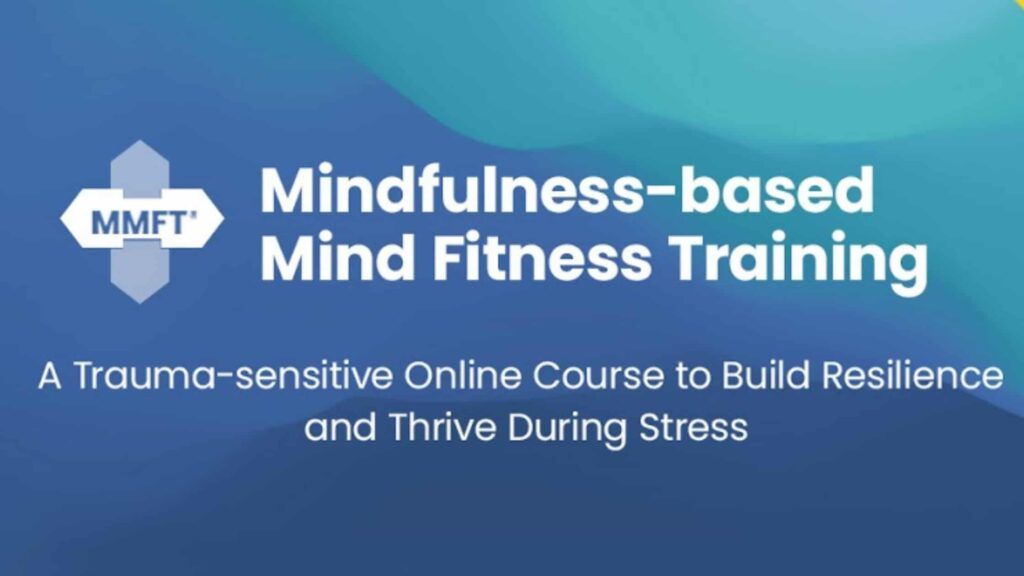In today’s fast-paced work environment, staying focused and maintaining productivity can be challenging. In this post, I will explain seven mindfulness techniques at work that can help you manage stress, stay present, and boost performance. I will also guide you through practical mindfulness strategies designed to keep you grounded, handle workplace stress more effectively, and ultimately enhance your productivity.
What is Mindfulness in the Workplace?
- Mindfulness in the workplace involves being fully present and engaged in the task at hand, without being distracted by external stressors or internal chatter.
- It’s about cultivating awareness of your thoughts, emotions, and environment while staying focused on the present moment.
- The practice of mindfulness can have profound effects on workplace productivity, stress management, and overall job satisfaction.
- In terms of stress management, burnout has become a significant issue in many workplaces, often resulting from prolonged periods of high stress without adequate rest or mental breaks.
- Mindful breathing techniques, for example, can lower heart rate and reduce tension in stressful situations.
- Over time, the practice of mindfulness can lead to a more balanced emotional state, reducing overall stress and preventing the buildup of chronic workplace anxiety.
Mindful Breathing Techniques for Stressful Moments
Breathing is closely linked to the nervous system, which controls our body’s stress response. When we’re stressed, our breathing becomes shallow and rapid, signaling to the brain that we are in a state of danger or anxiety. Here are some key breathing techniques and their benefits, along with practical ways to incorporate mindful breathing into your daily work routine.
Deep Belly Breathing for Instant Calm
Deep belly breathing, also known as diaphragmatic breathing, is one of the simplest and most effective techniques for instant stress relief. Unlike shallow chest breathing, deep belly breathing involves breathing deeply into the abdomen, filling the lungs completely and slowing down the heart rate.
How to practice deep belly breathing:
- Sit comfortably with your back straight and place one hand on your chest and the other on your abdomen.
- Take a slow, deep breath in through your nose, allowing your belly to rise as it fills with air (the hand on your abdomen should move more than the one on your chest).
- Exhale slowly through your mouth, emptying the air from your belly.
- Repeat for 5-10 breaths, focusing on the sensation of the air filling and leaving your body.
This technique can be used whenever you feel overwhelmed or stressed, helping you to calm down and regain control in a matter of minutes.
Box Breathing to Regain Focus
Box breathing, also known as square breathing, is a structured breathing technique that helps you regain focus and maintain calm in high-stress situations. It’s particularly useful when you need to reset your mind after a disruption or to prepare for an important task.
How to practice box breathing:
- Inhale through your nose for a count of 4.
- Hold your breath for a count of 4.
- Exhale through your mouth for a count of 4.
- Hold your breath again for a count of 4.
- Repeat this cycle 4-5 times.
Box breathing helps to regulate your nervous system, improve concentration, and restore a sense of balance. It’s a great way to reset mentally, especially during or after stressful meetings or presentations.
4-7-8 Technique for Relaxation During High-Pressure Moments
The 4-7-8 technique is a breathing pattern designed to promote relaxation and is particularly effective in moments of acute stress or anxiety. By lengthening the exhale, this technique helps calm the nervous system and reduces feelings of panic.
How to practice the 4-7-8 technique:
- Inhale quietly through your nose for a count of 4.
- Hold your breath for a count of 7.
- Exhale completely through your mouth with a whooshing sound for a count of 8.
- Repeat this cycle 3-4 times, focusing on slowing down your breathing.
This technique not only provides immediate relaxation but can also help improve sleep quality and reduce anxiety when practiced regularly.
Quick Ways to Incorporate Mindful Breathing into Daily Tasks
Incorporating mindful breathing into your daily work routine doesn’t require a lot of time. Here are some quick and easy ways to do it:
- Before starting a new task: Take a few deep breaths to clear your mind and set an intention for the task ahead.
- During meetings: Practice box breathing if you start feeling stressed or overwhelmed during a meeting, even while listening.
- At your desk: Every hour or so, take a mindful breathing break. Close your eyes, take 5 deep belly breaths, and then return to work with a clearer mind.
Before responding to stressful emails or calls: Pause for a moment, take a few slow, controlled breaths, and then respond with a calm, collected mindset.
Hope you’re finding this post useful!
Want to take your mindfulness practice further? I have got some fantastic tools that could be just what you need. Give them a look and see how they can benefit you!



Mindfulness Techniques for Task Management
One of the biggest challenges in task management is determining which tasks are most important. It’s easy to get overwhelmed by a long to-do list or get caught up in less meaningful activities. Mindfulness helps you slow down, take stock of your priorities, and focus on what truly matters.
When you approach task prioritization mindfully, you bring full attention to the process. This means pausing, assessing the significance of each task, and considering its impact on your goals. By taking a mindful approach, you’re able to differentiate between urgent but less important tasks and those that will move you closer to your larger objectives.
How to prioritize mindfully:
- At the start of the day, take a few moments to center yourself and review your tasks.
- Focus on what tasks align with your key goals, both short-term and long-term.
- Prioritize tasks that bring value and contribute to meaningful progress, rather than getting caught up in busy work.
- Be mindful of your energy levels, and choose tasks that match your focus and energy at different times of the day.
By practicing mindful prioritization, you can reduce overwhelm and direct your attention to what truly requires your focus, leading to greater productivity and satisfaction.
How Mindful Time Blocking Helps
Time blocking is a popular productivity strategy where you allocate specific blocks of time to complete certain tasks. Mindful time blocking involves setting aside dedicated time for tasks while being fully present in that block of time. Rather than switching between tasks or multitasking, you focus on one task during the entire block, which enhances your productivity and improves the quality of your work.
How to practice mindful time blocking:
- Begin by identifying key tasks that need your focused attention.
- Block out specific chunks of time on your calendar for these tasks, ensuring that each block has a clear purpose.
- During the time block, eliminate distractions and commit to staying focused on the task at hand.
- At the end of the time block, take a mindful break, reflect on your progress, and then transition to the next task.
Mindful time blocking helps you enter a flow state where you can work with greater efficiency. It also creates natural breaks, allowing you to recharge and avoid burnout.
How to Handle Interruptions Mindfully
Interruptions are inevitable in the workplace, whether it’s a phone call, a colleague dropping by, or a sudden urgent task. Mindfulness teaches us how to handle these interruptions without getting flustered or losing focus. Rather than reacting impulsively to every interruption, mindfulness allows you to pause, assess the situation, and respond thoughtfully.
Steps for handling interruptions mindfully:
- Pause & Breathe: When an interruption occurs, take a brief moment to pause and breathe. This helps you stay calm and centered, rather than reacting with frustration or stress.
- Assess the Interruption: Consider the urgency and importance of the interruption. Does it require immediate attention, or can it wait until later?
- Respond Mindfully: If the interruption needs to be addressed, respond calmly and with full presence. If it’s something that can be postponed, politely communicate that you’ll handle it once you’ve completed your current task.
- Re-center After the Interruption: Once the interruption is over, take a few deep breaths to re-center your focus before returning to your original task.
By handling interruptions mindfully, you can prevent them from derailing your workflow.
Mindful Listening During Meetings
Meetings are a central part of work life, but often, distractions, multitasking, and stress prevent us from fully engaging in them. Let’s explore how mindful listening differs from active listening, how to respond thoughtfully, and how to be fully present during meetings.
Active Listening v/s Mindful Listening
Active listening involves focusing on what the speaker is saying, acknowledging their words, and providing feedback. While this is a valuable skill, mindful listening goes a step further by incorporating a heightened awareness of both the speaker’s words and your own internal responses. Mindful listening involves being fully present, letting go of distractions, and tuning in to the conversation without judgment or preoccupation with your next response.
Key differences between active and mindful listening:
- Active listening is often focused on understanding and responding, but your mind may still be engaged in forming a reply while the other person is speaking.
- Mindful listening requires you to stay fully present, listening to the speaker without allowing your thoughts to wander. You’re not just hearing words; you’re aware of the emotions, tone, and intent behind the message.
In the workplace, when you listen mindfully, you create space for more thoughtful and meaningful exchanges.
How to Respond Thoughtfully Rather Than Reactively
One of the key principles of mindfulness is responding thoughtfully rather than reacting impulsively. In meetings, it’s easy to react quickly—especially if something triggers an emotional response or if you’re eager to get your point across. However, reacting too quickly can lead to misunderstandings, missed points, or even conflict.
How to respond thoughtfully during meetings:
- Pause before responding: When someone finishes speaking, take a moment to process what they’ve said. This brief pause gives you time to fully absorb their message rather than jumping in with a quick reaction.
- Acknowledge the speaker’s point of view: Before offering your own perspective, acknowledge the other person’s statement. This demonstrates that you’ve listened carefully and respect their input.
- Respond with clarity and intention: Once you’ve paused and considered the speaker’s message, respond thoughtfully. Be clear, concise, and intentional in your reply, avoiding impulsive reactions that could escalate the situation.
By practicing this approach, you can foster a more respectful, collaborative environment where everyone feels heard and valued.
How to Be Fully Present in Meetings
In today’s workplace, it’s common to feel pulled in multiple directions during meetings. You might be thinking about your next task, checking emails, or worrying about a deadline. However, practicing mindfulness can help you remain fully present in meetings, ensuring that you give your complete attention to the discussion at hand.
Steps to stay present during meetings:
- Set an intention for the meeting: Before the meeting begins, take a moment to set an intention to be fully present and engaged. This small mental shift can help you stay focused throughout the discussion.
- Put away distractions: Close your email, silence your phone, and eliminate any other distractions that might pull your attention away from the meeting. This allows you to focus fully on the conversation.
- Practice mindful breathing: If you notice your mind wandering, take a few deep breaths to bring yourself back to the present moment. This simple act of mindful breathing helps you reset your focus and stay engaged.
- Tune in to non-verbal cues: Pay attention not only to the speaker’s words but also to their body language, tone, and facial expressions. Being mindful of these non-verbal cues can give you deeper insight into the message being conveyed.
- Engage mindfully when speaking: When it’s your turn to speak, do so with intention. Speak clearly, remain concise, and maintain awareness of your own thoughts and emotions as you contribute to the discussion.
Being fully present in meetings improves your understanding of the discussion, strengthens your relationships with colleagues, and enhances the overall effectiveness of the meeting.
Final Thoughts
By practicing mindful breathing, task management, listening, and staying present in meetings, you’ll be able to reduce stress, increase productivity, and foster more meaningful connections with colleagues. These simple yet powerful practices allow you to regain control of your focus and energy, preventing burnout and enhancing job satisfaction.
Now is the time to take the first step. Start applying these mindfulness techniques today and experience the transformation in how you work, interact, and thrive.
Ready to take your mindfulness journey to the next level?
Discover programs that can enhance your practice and boost your overall well-being.





